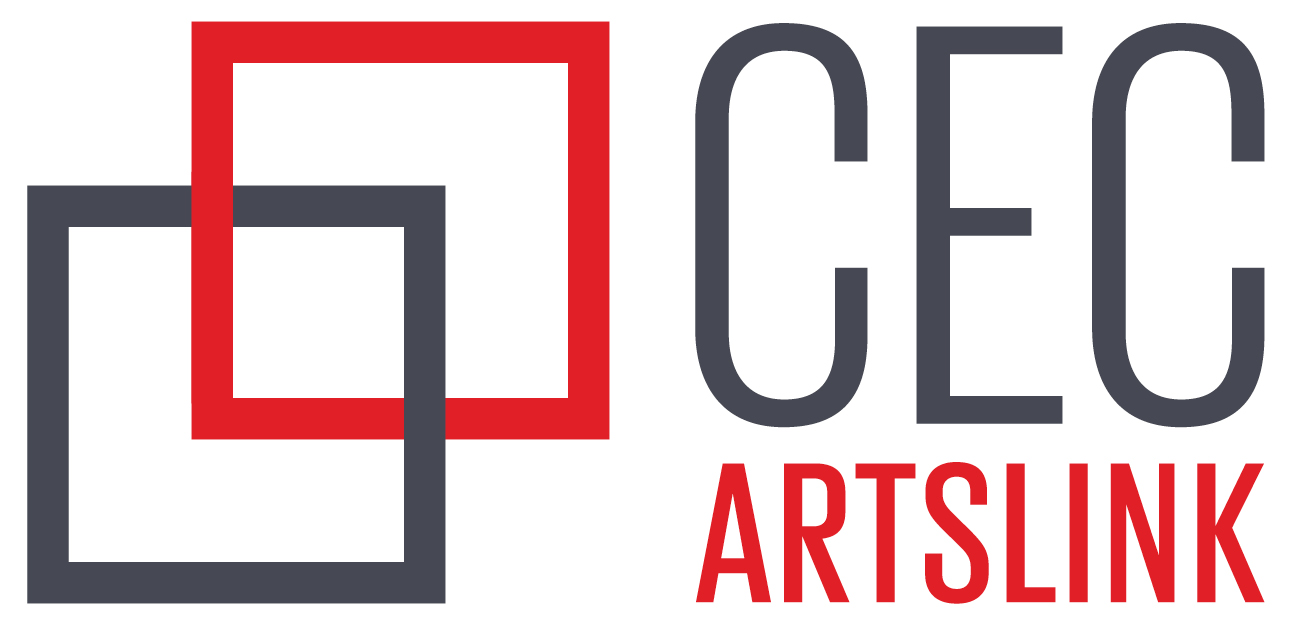Rivers, landfills, food waste: artists working towards environmental justice
How can artists help citizens as well as local governments better address some of the most pressing environmental issues that impact their lives and health every day?
Artists Bermet Borubaeva, Kyrgyzstan, and Melissa Potter, USA, met in Chicago during an ArtsLink International Fellowship in 2021 and have worked together both in Chicago and Bishkek, expanding their creative practices and finding creative ways to enhance the quality of life for the communities in which they live.
Bermet and Melissa discuss their work and shared projects in conversation with CEC ArtsLink Fellowship Program Director Megha Ralapati.
Megha: Your practices explore agriculture, climate justice, labor rights and ecofeminism, among other things. What led to your interest in art and sustainability?
Melissa: My main medium, paper, is dependent on the environment. Climate change became a natural participant in the way that I make work because of my medium. Previously, climate change could be somewhat abstract, but in the past ten years, I’ve watched climate change accelerate through its impact on the world and my process.
Bermet: As a political scientist, artist and researcher, I approach my artistic practice through the format of question, methodology and approach. This process is crucial for me; it helps me tap into new, or even utopian ideas. This is also how I integrate agriculture, labor and science into my work.
Megha: You have been in dialogue as artists for some time now. How would you describe what your collaborative work looks like? How are you working together at the moment?
Bermet: We began collaborating when I came to Chicago in 2021 for my ArtsLink International Fellowship. Melissa was so brave and excited about our Eco-Festival TRASH, in which she participated in 2022. Eco-Festival TRASH started more than 10 years ago, after I and other artists finished the School of Contemporary Art, ArtEAst. Now we are producing it with the co-founder of Tazar Kyrgyzstan, Aimeerim Tursalieva, and the Bishkek School of Contemporary Art (BiSCA).
Melissa: After learning about the festival, I decided to build it into my classes at Columbia College. My students had very little knowledge of the dynamics around water ecologies like the completely bizarre and complicated history of the Chicago river. So, I embedded investigations of the Chicago river and the parallel politics the TRASH Festival is animating in Bishkek. That turned out to be a really thought-provoking project for me, as a teacher visiting Bishkek.
I had never traveled to Central Asia, so I really enjoyed learning about the landscape and biome. The psycho-geographic design of this project was so brilliant because it was totally experiential. You literally follow the Ala-Archa river to the trash dump.
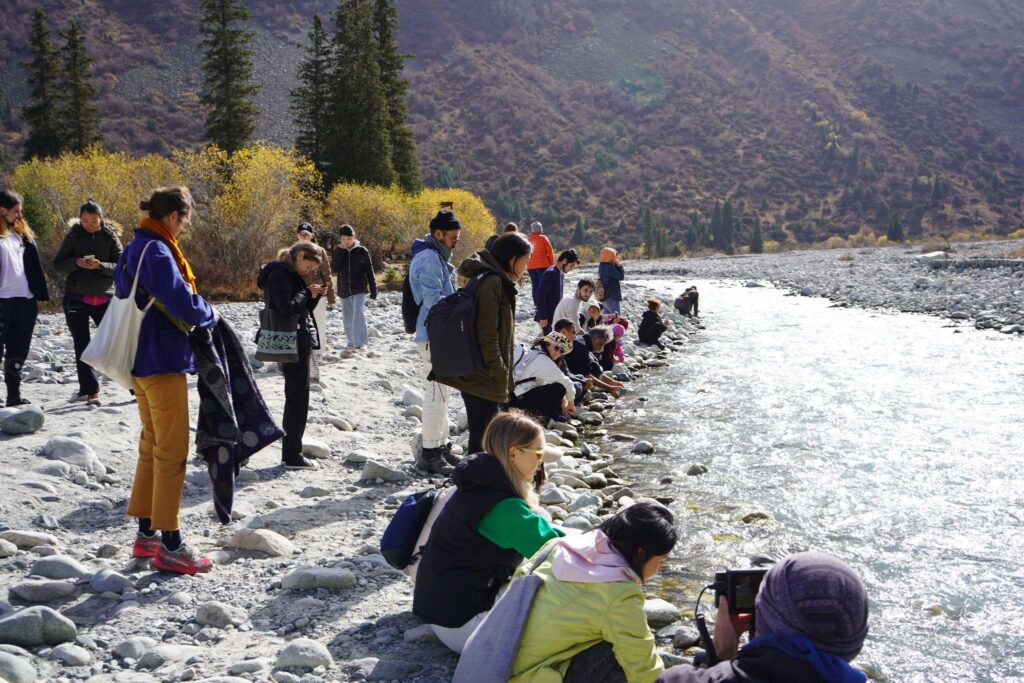
There is a whole community of people who make their money recycling in that dump. The children that we were working with were so receptive to what was taking place. I realized that recycling is not an abstract concept for them. When I teach about “reduce, reuse, recycle,” those things, they are metaphoric abstractions to the American public. No matter what demographic you’re working in, no matter what community, because we hide all that in America.
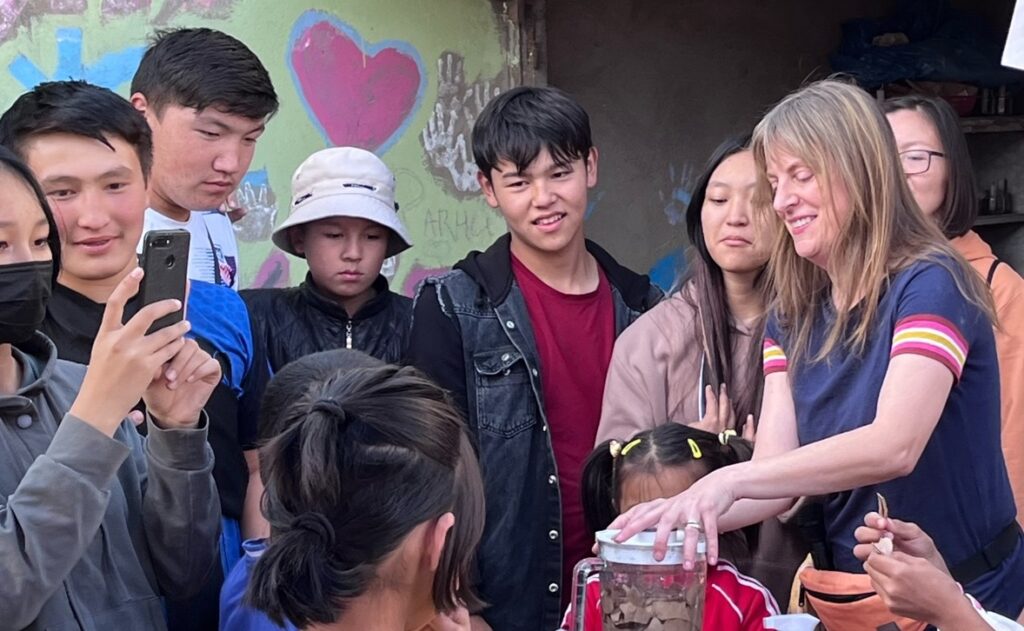
I came home and joked around with my friends that I will never teach another recycle-based workshop again unless I can tackle what happened in Kyrgyzstan. There was a tangible connection between what we were doing and its impact on the physical space in front of us.
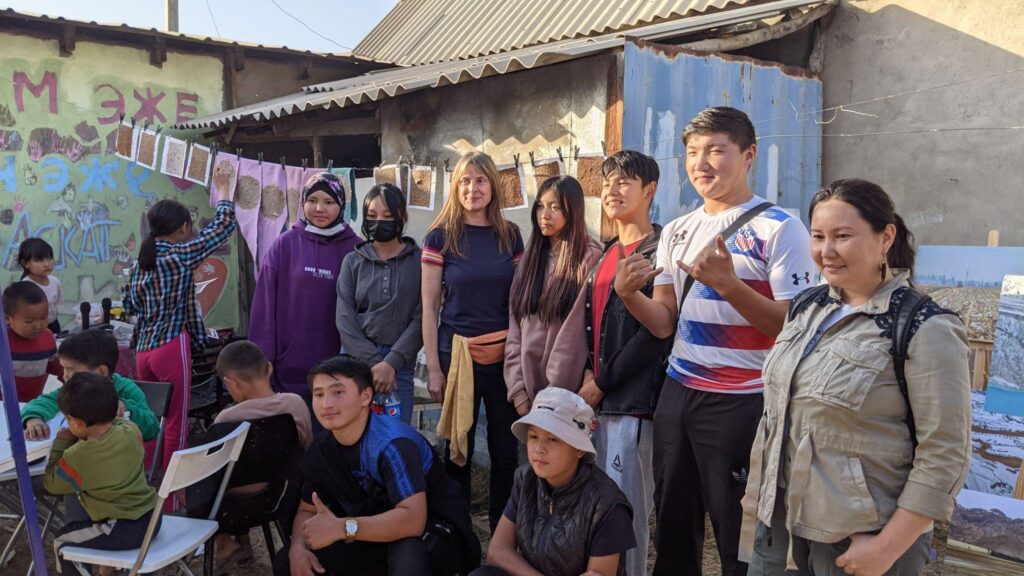
Megha: Bermet, how do you prepare for this kind of research and artistic exchange? After returning home from the U.S., what was it like to distill that information and continue the conversations that you started?
Bermet: For me, the most important thing was to meet the community of artists in Chicago. There are so many artists working with different types of problems, but it’s still about the same concept of sustainability.
I visited Milwaukee with Alyx Christensen and Rudy Medina from Open Kitchen. As we saw the city Alyx asked me, “In Kyrgyzstan, do many restaurants use vegetables grown locally?” And I told her that, actually, across the whole country food is mostly locally grown and locally used.
We understood immediately the difference between the U.S. and Kyrgyzstan. In the local supermarkets, the food will be from another part of the world. And for me, it was immediately proof that Kyrgyzstan should keep its system. When you have a garden, you can harvest everything and share with your friends and relatives. Or even to sell to others, like another member of BiSCA Oksana is doing. I think it’s super important to give people an alternative. To be able to have something on your table that is locally grown.
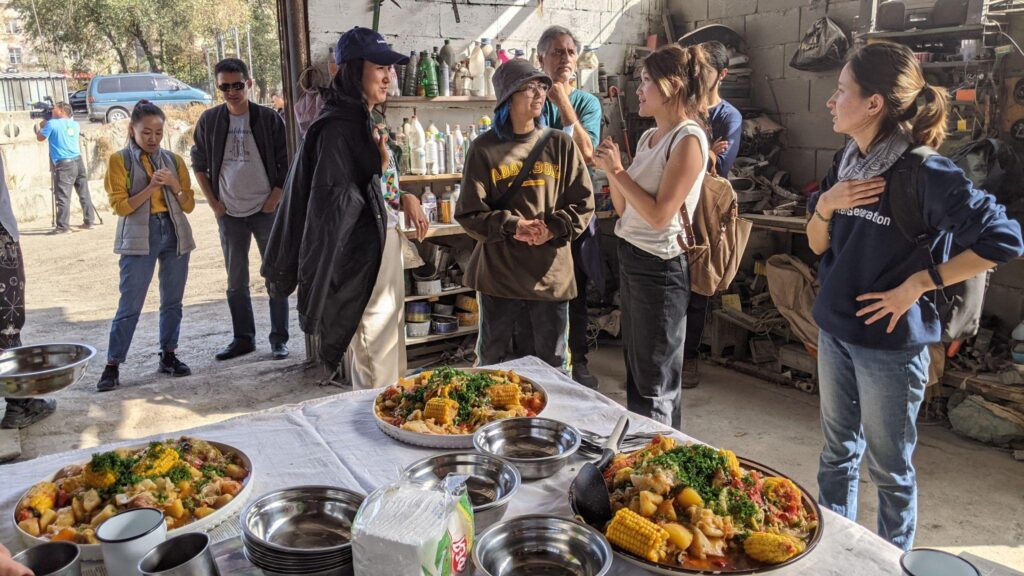
In Chicago, the river is the source of water for everything, and it’s polluted. In Bishkek, the river flows through the city dump. Before, we used to have the cleanest water. Now, just crossing the water is really toxic. I think that my residency, network and community crystallized the idea of treasuring our resources.
Megha: What do you wish people understood about the power of art to address a community’s issues?
Bermet: Melissa and I talked at length about the neighborhoods about twenty minutes from the city center of Bishkek that are built on the sanitation zone. People who came to power illegally sold land near landfills, and now people live there amongst air pollution and toxic landfills.
Once you visit there, it’s difficult to continue working as an artist, without this place impacting you. After you go for a fancy coffee, it’s like seeing backstage, behind the facade of the city. As an urban environmentalist, it’s crucial to show the connections between our urban life and its actual impact. I think the landfill is the best example to show that something is wrong with our society.
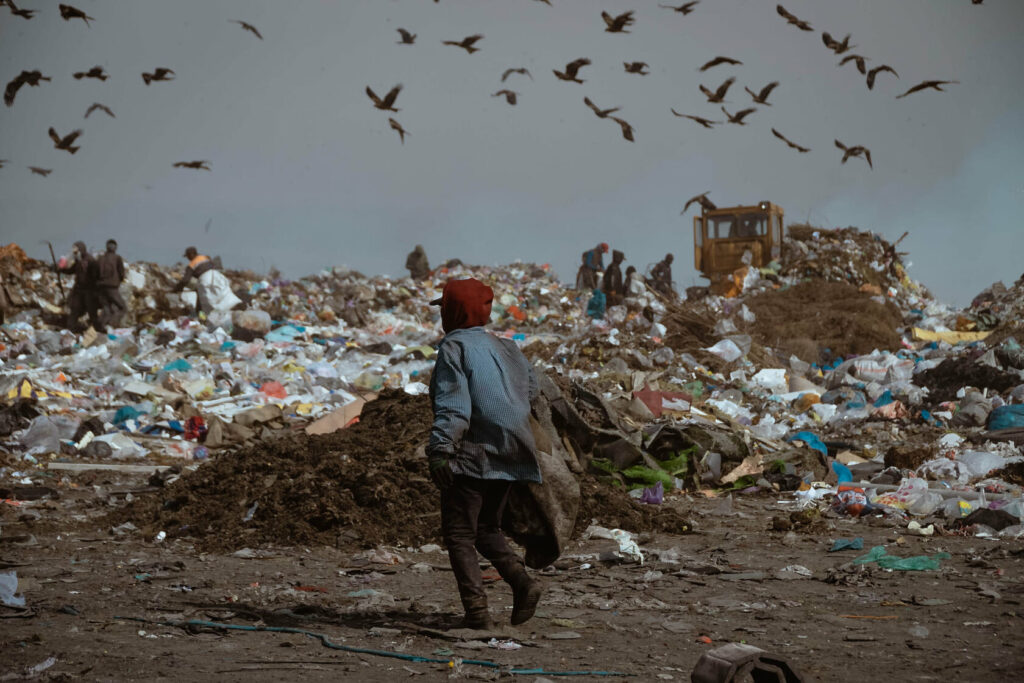
In highlighting the problem, we don’t want to excise the impoverished or just do something quickly. It’s not the way we work with communities. So, we opened the Library of Rescued Books, where we have English courses, environmental and chess lessons for children.
We grew such a big platform through mutual collaboration. We learn a lot from this community as well as bringing something to share. When I was in Chicago, I was thinking how this model could be adopted.
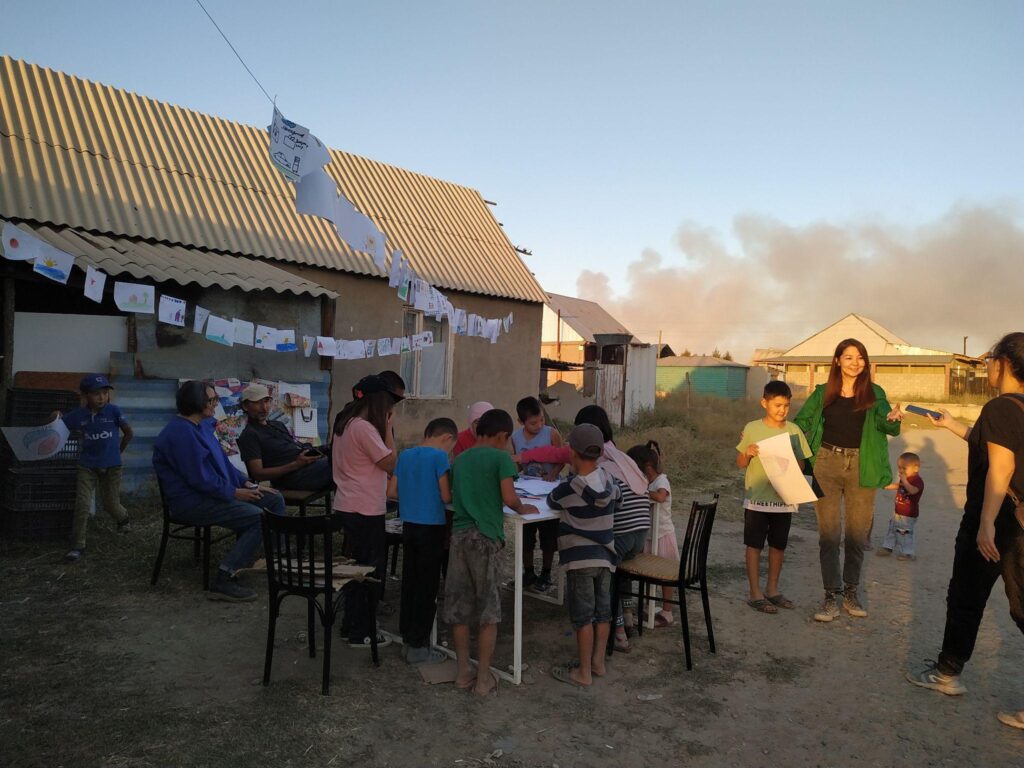
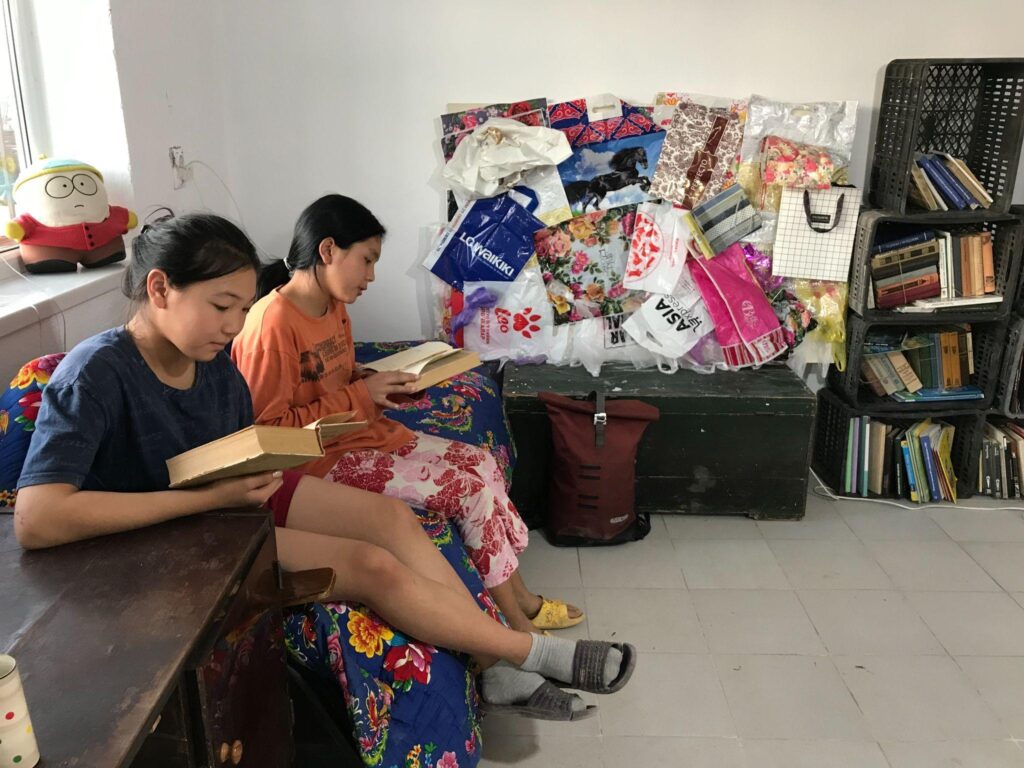
Melissa: We can enrich our societies and our democracies through mutual understanding. And that we do by discovering them and learning more. I really wanted to find feminists in Bishkek because I knew they were there. Artists recently launched the first Feminalle in Bishkek, which was very controversial. Through the networks that Bermet worked so hard to create, I was able to connect with the woman who curated the first Feminalle, Altyn Kapalova, and it has inspired a lot of work.
When you get into an immersive environment, it’s so many things at once. It is the project that you’re working on, it’s the people you’re working with. It’s hilarious when you think about how I only spent, what, ten days there. It’s a tiny amount of time and yet look at what happened! I also think that mutualism in sharing those contacts is beneficial. We create work that I can build upon, but it’s also work that people in the country can build upon too through these new connections. And I think that’s really profound.
Bermet: The Bishkek School of Contemporary Art also has this feminist prism. The community that we’re working in is mostly women and children and is a very Muslim community, very religious and patriarchal. Being an active feminist and going to this community, when you even look deeper, you really understand that no matter how many articles you write, it is very complicated to reach this audience. It’s almost impossible to emancipate the women and for them to be treated like equals. It’s like being somewhere on another planet. But it’s a reality that we are facing now. Before, I had a lot of answers about how to emancipate women in our country. But now, I really don’t have answers. But I think after deep research and hopefully after years of work, it slowly can change.
Megha: I love that as a way of thinking. “I don’t have the answer…yet.” And what we need are new methodologies. That, to me, is hopeful, actually. What are you working on currently and what is your hope for your collaborative work and maybe those overlap?
Melissa: I have a new project that was launched through Monuments2Movements, which is a new organization that Neysa Page-Lieberman and Jane Saks founded. It creates monuments honoring ideas and movements, instead of individual heroes.
My project is called the Monument to Climate Justice. I created the Feminist Seed Bank to highlight land-based practices that are also traditional women’s practices. The project considers the simultaneous loss of cultural capital and plant capital during the climate crisis. TRASH Festival is another incarnation of that. Bermet and I already have danced around working together again, and my hope would be to get another opportunity to go a step deeper into how these two communities could connect. Or how many communities could connect around seeds, climate and trash? I think that with our work, our world is wide open. Bermet is an incredibly hard and passionate worker and if we decide that that’s what we want to do, we’re going to make it happen.
Bermet: We are planning a TRASH Festival focused on the idea of food waste. We will call it “Dostorkon.” This actually refers to the traditional place where food is eaten with the entire meal setting which people share and eat collectively. It’s very traditional in Bishkek and very understandable for local people when you say dostorkon. It signifies that people gather and eat together. With this event, we can really show backstage how we go from the seeds to leftovers and then to the landfill.
We are also working on an environmental fairy tale about the community. It is about two school children who found a waste dump in their neighborhood. In the beginning, they thought that it was something golden, the Golden Mountain. But instead, they discovered that it’s super toxic. They started to find solutions and fight the devil of the waste dump. My colleague Altyn Kapalova is writing this book based on the draft by Aimeerim Tursalieva and myself. We also have a great illustrator, Cholpon Alamanova, so we hope to publish the book this year and also make a video or some kind of animated book.
Another thing is that we also try to work with the local women. Most of them work in the textile industry, they sew clothes. It’s a low paying job and they export everything. We made a kind of laboratory for upcycling textile leftovers to something useful like design objects and even toys for these fairy tales that we are creating.
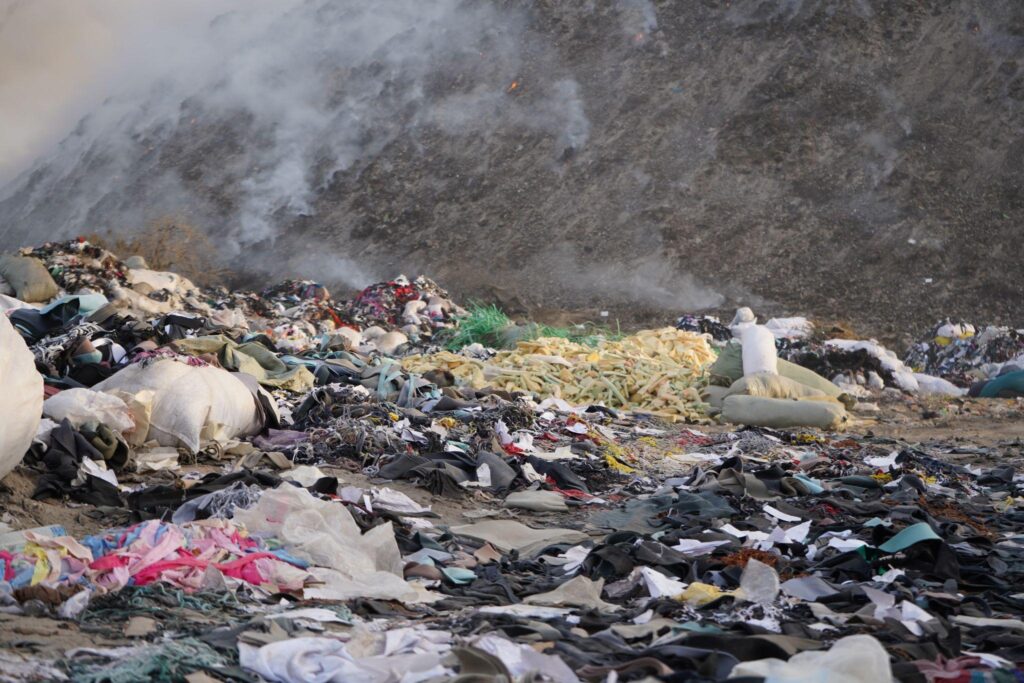
We will present everything at the TRASH Festival in 2023 which should be quite big this year because we are collaborating with CEC ArtsLink’s Art Prospect Festival and presenting around twenty five to thirty art projects. Next-next year, it will be food leftovers and organic compost. And maybe one day, the festival can explore building construction leftovers. And we can build a house from the leftovers.
For us, the most important thing is for the community to support each other. They all understand and believe that. At the end of this, if we said this did not make art, we made friends and made relationships. But this is art itself.
